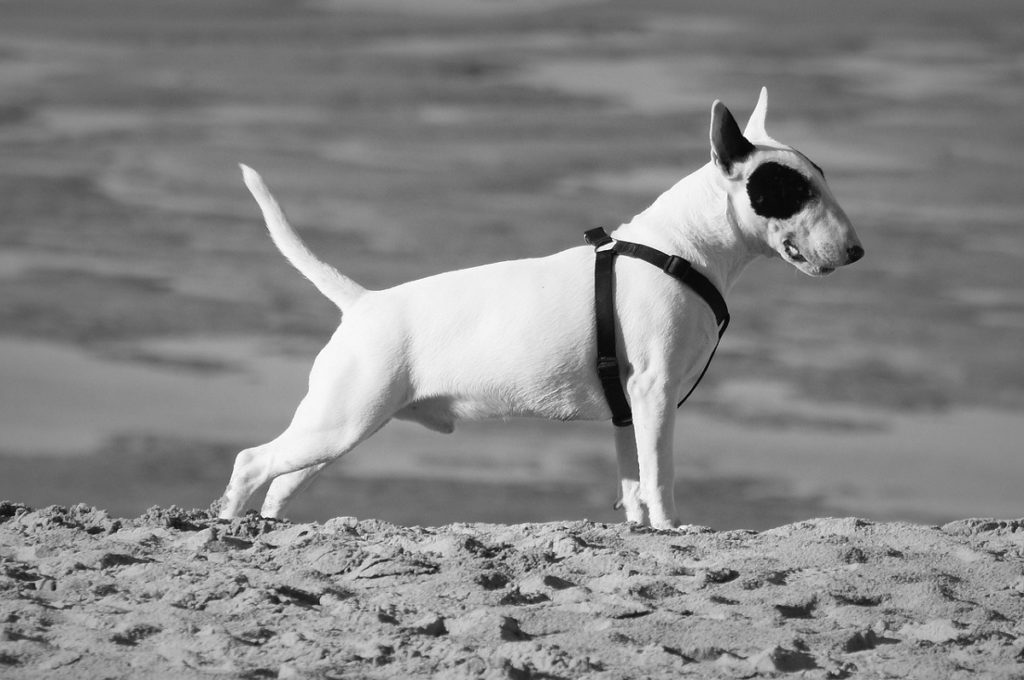A broken bone is no laughing matter. Especially when it comes to broken bones in our four-legged canine friends. Not only are broken bones painful, it causes a huge disruption in your dog’s life, especially when it’s his leg that is broken. Think about it… dogs use their legs constantly. They use them to explore all over their environment, to run, to play, to dig, to scratch. When a dog’s leg is broken, it can put a serious crimp in their lifestyle and activity levels.
Sadly, a broken leg in dogs is actually fairly easy to do. A dog’s leg can be somewhat fragile, all things considered. Both the front legs and the back legs are made up of three different bones. A dog’s front leg often gets broken in the radius, which is the main bone that supports much of their weight.
Breaks, as well as hairline fractures, are relatively common, especially when it comes to the longer bones that bear the most weight and take the biggest beating. Their back legs are made up of their shin and thigh bones, both of which can suffer a break or fracture if impacted in the right way.
A dog can also dislocate a bone, especially the elbows and shoulders, or even their hips. Additionally, not all fractures are classified the same. Some fractures are called open fractures, which is what happens when the skin breaks open and you can see your dog’s bone. These type of fractures are vulnerable to infection because the wound site is quickly contaminated with dirt and bacteria. Whereas other fractures are called closed fractures, which is what happens when a dog breaks or fractures a bone, but the skin stays intact. These are less likely to suffer from infection, although they are still possible.
When a fracture is just a crack within the bone, it’s considered a hairline fracture, not a full break. Though a hairline bone fracture in dogs is less aggravating, they are still painful and can get worse if left untreated. You should handle a hairline fracture the same way you would handle an open or closed fracture and stabilize the bone so that it can heal properly. Sometimes dogs can sprain their leg as well. In all cases, stabilization of the wounded bone or joint is key to proper healing. If you notice your pup having trouble walking, it’s critical that you take him into the vet to see if your dog’s foot is broken or sprained.
Causes of a Broken Leg in Dogs
There are many reasons a dog may break a leg and it can happen suddenly, with no warning. It’s important to stay calm so that your dog stays calm from watching your example. If your dog is overly excited, he could accidentally make things worse. Typically, a broken bone is the result of some kind of sudden force or impact to the dog’s body. This can happen because of something hitting your dog, such as a vehicle accident, or because of a fall on his part.
Smaller dogs can even break a leg jumping up and down on furniture in the home, especially if they are dainty, fragile breeds. Other causes of broken legs in dogs include accidents during play or exercise time, sports injuries, poor diet with inadequate levels of calcium, age (older dogs have more fragile bones, as do younger dogs whose bones have not fully formed), diseases, and underlying health issues, such as canine bone cancer or inherited collagen defects, both of which weaken a dog’s bones and makes them more vulnerable to a fracture.
Also, different breeds can be more susceptible to breaks, especially toy breeds that have tiny, easily broken bones. Dogs that are very excitable or adventurous are also more prone to broken bones merely because they get themselves into more trouble on their own!
Symptoms of a Broken Leg in Dogs
The most obvious sign of a broken leg will be when your dog suffers from an open fracture. The skin will split, and you will be able to see your dog’s leg bone protruding where it is broken. Of course, there will be bleeding, and your dog will be in significant pain. For closed fractures, you may notice your dog limping or favoring one leg, or he may refuse to walk completely.
The leg may look as though it is twisted or turned at an awkward angle, and you may start to see swelling right away. Your dog may exhibit other signs that indicate something is wrong, such as whining, howling, or whimpering, moving their leg in a way that isn’t normal, or holding one leg up if they do attempt to walk. You might see bruising of the area in addition to the swelling, and you may even notice your dog’s leg bone make a grinding or popping sound.
Other warnings signs can include a refusal to play or climb stairs, even if he is still willing to walk. Playing and climbing tend to put even more weight on the broken bone, so your dog will avoid those activities to alleviate his pain as much as possible. A dog may also lose their appetite and attempt to isolate themselves or become aggressive and snap at anyone that tries to touch the painful limb.
 If you suspect that your dog may have a broken leg, don’t delay in getting him to the vet. While there are other conditions that can cause similar symptoms and pain, such as an abscess on dogs or a torn muscle or ligament, it is much better to address the issue promptly than wait and possibly make your dog’s condition even worse. Plus, if their bone has been broken, it may need to be set and that is something you should leave to a professional so that you know it’s been done properly.
If you suspect that your dog may have a broken leg, don’t delay in getting him to the vet. While there are other conditions that can cause similar symptoms and pain, such as an abscess on dogs or a torn muscle or ligament, it is much better to address the issue promptly than wait and possibly make your dog’s condition even worse. Plus, if their bone has been broken, it may need to be set and that is something you should leave to a professional so that you know it’s been done properly.
In some cases, especially if your dog has suffered from serious trauma, delaying going to the vet could put your dog’s life in danger, especially if there is internal bleeding or injury to vital organs. Complications happen fast, so don’t wait or question yourself. Just load your dog up and go, at least then you will know you did all you could if the situation takes a turn for the worse.
Diagnosing and Treating a Broken Leg in Dogs
The main goals when a pet suffers a broken leg is to treat your dog’s pain, stabilize the injury so that further damage is prevented, and reduce risks of infection. That’s why it’s important to transport your dog very carefully when taking him to the vet, especially if your dog has suffered major trauma, such as getting hit by a car.
Major trauma can mean internal injuries that you can’t see and moving your dog the wrong way or too quickly could aggravate those injuries and worsen your dog’s condition, or even cause additional injuries.
You should attempt to stabilize the broken bone as best you can, but don’t try to set the bone or move the dog’s leg position. Just stabilize it as it is so that no further movement or injury makes it worse. If you have someone who can help you get your dog to the vet, that is ideal. One of you can drive while the other keeps the dog calm and still.
Your vet may order blood work as well as IV fluids and possibly IV antibiotics and pain meds if the dog’s condition warrants it. Your vet may sedate your dog, especially if he is in a lot of pain or extremely agitated so that they can do X-rays and examine your dog without mishap or aggression. Ultrasounds can help assess your dog’s vital organs and make sure there are no injuries there. Some vets may give your dog a catheter, so they aren’t putting weight on the broken limbs to use the bathroom if or when they are awake.
Depending on the severity and type of break, your dog may or may not need surgery to repair the damage. In most cases, immobilizing the broken leg to prevent further trauma or injury to the bone, muscles, and nerves and relieving your dog’s pain is the first plan of attack. Your vet will need to set the bone so that it heals seamlessly.
If your dog’s broken bone is a closed fracture, stabilizing and setting the bone may be all that is needed. Then you will just need to focus on keeping your dog still and calm, limiting their activities as much as you can. You also want to make sure the cast stays dry and clean and that they don’t use it as a chew toy.
In some cases, a cast or splint may not be the best option. Using a cast can cause recovery times to increase in length. Other options include metal devices that use pins, screws, wires, and metal plates attached to the bone to help stabilize the injury. If the damage is very severe, sometimes the most humane option is to consider amputating the limb. Dogs adjust extremely well to life on three legs, and sometimes that’s just the safest option that can be made.
Once your dog has been assessed and treated, your vet will be able to advise you on how best to allow your dog to recover. Recommendations will be based on the age of your dog, their activity levels, and possibly their breed. Since toy and tea-cup breeds are more vulnerable to injury, it also makes them more vulnerable to re-injury.
 If your dog is wearing a cast or a metal stabilization device, he will require follow up visits to assess his progress and to adjust the device as he heals. Your dog will most likely be given pain medication and antibiotics. Make sure you give them all they are prescribed, as prescribed to avoid unnecessary pain and potential infection.
If your dog is wearing a cast or a metal stabilization device, he will require follow up visits to assess his progress and to adjust the device as he heals. Your dog will most likely be given pain medication and antibiotics. Make sure you give them all they are prescribed, as prescribed to avoid unnecessary pain and potential infection.
In most cases, it will take a dog anywhere from four to six weeks to fully recover from a broken leg. Older dogs take longer to heal, while younger dogs tend to heal more quickly. Some rehabilitation therapy may be recommended as well, things like icing your dog’s leg, massaging the injured limb, flexing your dog’s joints so everything continues to move properly, and any other recommendations your vet may make.
Your dog may need your help in carrying them outside to use the potty and keeping your dog crated for a period of time may be prudent as well. You will need to minimize their walking and activity as much as you can until the leg is strong enough to bear weight. Sometimes a special diet is necessary so that your dog doesn’t gain excess weight during their brief period of inactivity, because weight gain will only put more pressure on the dog’s broken leg.
Also, don’t go overboard on giving your dog treats during this time. Not only will he gain unhealthy excess weight, but you could also run the risk of creating poor behaviors or undoing good behaviors he has already been trained in. Reward your dog with treats only when you typically would anyway, and when you’re feeling sorry for them, give them lots of love and attention instead.
Once your dog’s leg begins to heal and he begins to feel better, he will try to become more active. It’s important that you follow your vet’s instructions and don’t allow your dog to overdo it. The last thing you want is to cause re-injury and have to start all over again. Have patience, follow your vets’ instructions, and your dog should be back to normal activity in no time.
Citations
“How to Handle Your Dog’s Broken Leg.” Hill’s Pet, Accessed 10 Dec 2018. www.hillspet.com/dog-care/healthcare/dog-broken-leg-treatment.
“Broken Leg in Dogs – Symptoms, Causes, Diagnosis, Treatment, Recovery, Management, Cost.” Wag!, Accessed 10 Dec 2018. www.wagwalking.com/condition/broken-leg.
“Broken Bones in DogspetMD Logo.” PetMD, Accessed 10 Dec 2018. www.petmd.com/dog/emergency/accidents-injuries/e_dg_broken_bones.
Mark. “How Do I Know If My Dog Has a Broken Bone and What Should I Do?” PetHelpful, 4 June 2017, Accessed 10 Dec 2018. www.pethelpful.com/dogs/symptoms-treatment-and-advice-for-broken-bones-in-dog.




